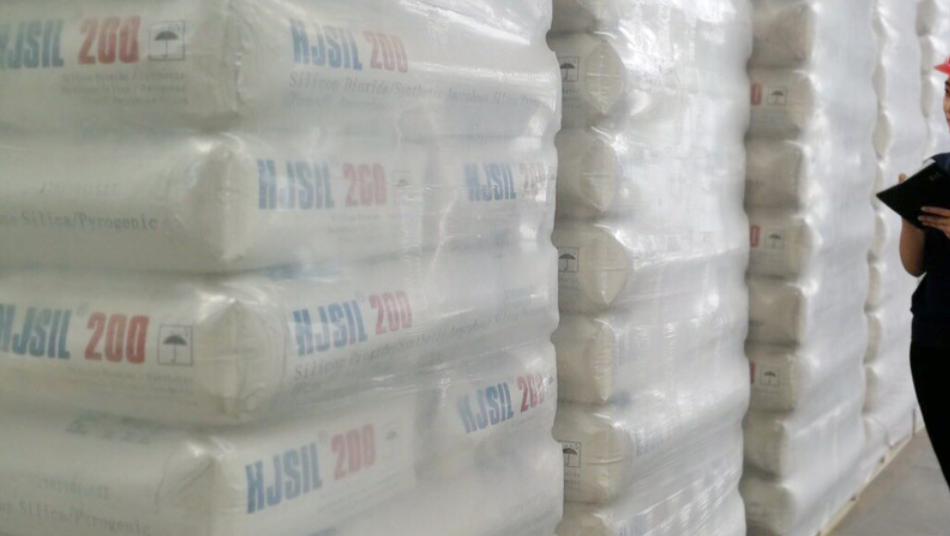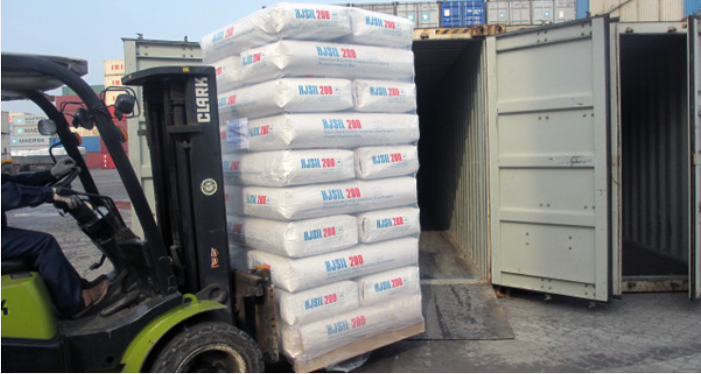Fumed silica is an important performance ingredient in industrial settings, and the way its surface is chemically and morphologically affected has a big effect on how well the product works. This technical guide gives you a structured way to choose the right grade. It talks about differences in surface chemistry, performance traits, processing conditions, cost factors, and requirements for application. This guide helps technical workers choose the right fumed silica grade and put it into practice by giving them a thorough look at the material's properties, how it can be processed, and what it needs to be used for.
This section examines the main differences between hydrophilic and hydrophobic fumed silica, focused on their surface chemistry, how well they work, and important processing parameters. Understanding these changes is important for choosing the right materials and using them in the best way.
The silanol groups (Si-OH) on the surface of hydrophilic fumed silica give it its performance properties. To get the most out of industrial uses, you need to understand these basic properties:
Surface Properties:
These properties determine the material's interaction with polar systems and its effectiveness in various applications.
Primary structural characteristics significantly influence performance outcomes:
| Physical Parameters | Typical Range | Impact on Performance |
| Primary particle size | 7-40 nm | Influences reinforcement efficiency |
| Specific surface area | 50-400 m²/g | Determines reactivity and loading requirements |
| Aggregate size | 100-500 nm | Affects rheological behavior |
| Bulk density | 30-60 g/L | Impacts handling and incorporation |
Rheological Effects in Liquid Systems The development of rheological properties depends on concentration and processing conditions:
Reinforcement in Solid Systems When properly dispersed, hydrophilic grades provide significant property enhancement:
The distinct behavior of hydrophilic fumed silica in polar systems leads us to examine its modified counterpart, which offers complementary benefits in non-polar applications.
Surface modification creates distinct characteristics that particularly benefit non-polar and moisture-sensitive applications:
| Key Parameters | Value Range | Significance |
| Carbon content | 2-8 wt% | Indicates modification level |
| Residual silanol | 0.5-1.5 OH/nm² | Affects hydrophobicity |
| Surface energy | 20-30 mN/m | Determines compatibility |
| Moisture uptake | <0.5 wt% | Important for stability |
While maintaining the basic morphology of fumed silica, surface modification influences structural characteristics:
| Physical Parameters | Typical Range | Impact on Performance |
| Primary particle size | 7-40 nm | Maintained from base silica |
| Specific surface area | 50-380 m²/g | Slightly reduced after modification |
| Aggregate size | 120-550 nm | Modified by surface treatment |
| Bulk density | 35-65 g/L | Affected by surface groups |
Rheological Effects in Non-polar Systems Surface modification enables unique performance in non-polar media:
Reinforcement and Functional Properties Modified grades provide multiple performance benefits:
Special Applications Performance The hydrophobic nature enables unique functionalities:
The modified surface chemistry offers several processing benefits that directly impact manufacturing efficiency:
| Parameter | Performance | Application Impact |
| Wetting time | <60 seconds | Faster incorporation |
| Incorporation energy | 30-50% reduction | Lower processing costs |
| Dispersion stability | >6 months | Extended shelf life |
Understanding these fundamental properties of both hydrophilic and hydrophobic variants enables us to establish optimal processing parameters for specific applications.
The surface chemistry of both variants influences their temperature sensitivity during processing:
| Phase | Temperature Range | Critical Considerations |
| Processing window | 20-40°C | Optimal dispersion |
| Maximum allowable | 60°C | Prevent degradation |
| Cool-down rate | 1-2°C/min | Maintain stability |
These parameters leverage the unique properties of each variant to optimize performance in specific applications:
Coating Systems:
Waterborne Formulations:
Solventborne Systems:
Elastomer Applications:
Silicone Systems:
Organic Elastomers:
These factors should help you choose and use either hydrophilic or hydrophobic fumed silica, while also taking into account the needs and processing abilities of the particular application. Regularly checking important parameters makes sure that the end application works at its best.
To choose the best fumed silica grades, they need to be carefully examined based on the needs of the product and the ability to process them. Based on the characteristics described in the last part, this section gives you a structured way to make decisions about which grade to give.
The selection process follows a hierarchical approach:
Each step in this hierarchical process narrows down the choices while making sure that all the important criteria are met. Let's take a close look at each choice point.
The first step in grade selection involves evaluating fundamental system compatibility. This evaluation focuses on several critical parameters that serve as primary decision points.
| System Parameter | Decision Point | Selection Impact |
| Polarity | Polar/Non-polar | Hydrophilic vs. Hydrophobic |
| Processing pH | <4 or >9 | Special grade requirements |
| Temperature exposure | >150°C | Thermal stability needs |
| Moisture sensitivity | Critical/Non-critical | Surface treatment level |
With system compatibility established, we can proceed to analyze specific performance requirements that will further refine our selection.
Performance targets must be translated into specific grade characteristics. This analysis connects application needs with material properties:
| Requirement Category | Key Decision Factors | Validation Methods |
| Rheological control | Shear profile needs | Flow curve analysis |
| Reinforcement level | Mechanical targets | Physical testing |
| Stability requirements | Storage conditions | Accelerated aging |
| Surface effects | Functional targets | Application testing |
While this analysis establishes basic compatibility, achieving optimal performance requires fine-tuning grade selection based on specific processing capabilities and application demands.
The optimization phase considers both equipment capabilities and process limitations to ensure practical implementation of the selected grade.
Equipment Considerations:
Process Limitations:
Fine-Tuning Parameters:
With an optimized grade selected, systematic validation ensures consistent performance across production scenarios.
Validation protocols must address both initial performance requirements and long-term stability considerations.
| Test Category | Validation Method | Success Criteria |
| Dispersion quality | Microscopy/grind gauge | Application-specific |
| Stability | Accelerated aging | Performance retention |
| Performance | Application testing | Target properties |
| Process robustness | Pilot trials | Reproducibility |
Scale-up validation should address:
The transition from successful validation to full implementation requires careful attention to documentation and quality control measures.
Proper implementation ensures consistent performance and efficient processing.
Establish monitoring protocols for:
Understanding and preparing for potential challenges is crucial for successful implementation:
Key Risk Areas:
Develop mitigation strategies for identified risks through:
This systematic approach ensures appropriate grade selection while minimizing implementation risks. Regular review and adjustment of selection criteria maintain optimal performance as requirements evolve.
Selecting the optimal fumed silica grade requires balancing technical performance with economic considerations. This section provides critical cost information and analytical tools to support your decision-making process.
Typical market pricing ranges (bulk basis):
Annual consumption significantly impacts procurement costs:
| Annual Volume (MT) | Price Structure |
| 1-10 | List price |
| 10-50 | 5-10% discount |
| 50-200 | 10-15% discount |
| >200 | 15-25% discount |
Geographic location affects total delivered cost through:
Total Value = (Performance Benefits + Process Savings) - (Material Cost + Implementation Cost)
Where:
For typical applications:
Cost management requires attention to more than just price. Key actions in four areas help control total spending while maintaining quality.
A reliable supplier should have strong technical expertise, a stable supply chain, and quality production facilities. Consider their geographic location and local support capabilities. The supplier's future plans and their ability to develop new products also affect long-term costs.
Smart ordering saves money in the long run. Having multiple suppliers helps control costs and ensures stable supply. Regular volume predictions help get better prices. Keep suitable stock levels based on your production needs. Long-term contracts should include clear price adjustment terms.
Good supplier support reduces total costs. Their experience helps solve production problems quickly. Regular technical meetings improve process efficiency. Joint development work often leads to cost savings.
Market changes can quickly affect your bottom line. Watch for major cost risks:
Use these methods to control risks:
This balanced approach helps choose cost-effective grades while maintaining product quality. The next section covers testing methods that ensure consistent quality at reasonable costs.
Building upon the selection framework established previously, successful implementation of fumed silica in industrial processes requires rigorous testing protocols and comprehensive safety measures. This section outlines specific methods and requirements for ensuring consistent product quality and safe handling.
The complexity of fumed silica behavior in various applications necessitates precise and well-defined testing protocols. These methods focus on critical parameters that directly impact product performance and process stability.
The following testing protocols ensure proper material characterization and performance validation:
| Test Category | Method Details | Key Parameters | Acceptance Criteria |
| Dispersion Analysis | Laser diffraction + microscopy | Cut-off size, distribution curve | D90 < 10μm, uniformity index < 2.0 |
| Stability Assessment | Centrifugation + aging | Separation rate, structure recovery | <5% separation at 3000g, >90% recovery |
| Dynamic Properties | Oscillatory rheometry | G', G", phase angle | Application-specific thresholds |
| Surface Activity | Contact angle measurement | Static and dynamic angles | Grade-specific requirements |
Consistent test results require proper equipment maintenance and calibration. The following protocols ensure measurement reliability:
Critical Parameters:
Performance Verification:
The unique physical characteristics of fumed silica demand specific safety considerations in industrial settings. Proper engineering controls form the foundation of safe handling practices.
Specific requirements for safe material handling:
| Control Measure | Specification | Monitoring Method |
| Ventilation Systems | Capture velocity >0.5 m/s | Hot-wire anemometer |
| Dust Collection | HEPA filtration, <0.1% penetration | Particle counting |
| Grounding Systems | Resistance <10⁶ Ω | Continuous monitoring |
| Pressure Relief | Set point: 0.1 bar | Regular testing |
Day-to-day operations require detailed protocols to maintain safety standards while ensuring efficient processing:
Handling Operations:
Critical Limits:
Despite preventive measures, facilities must prepare for potential incidents:
Dust Release Management:
1. Immediate area isolation
2. Proper cleanup sequence
3. Exposure assessment
4. Root cause investigation
Process Deviation Response:
1. Containment actions
2. Impact assessment
3. Corrective measures
4. Preventive controls
Successful implementation relies on thorough documentation and continuous monitoring. These systems support both quality control and safety compliance.
Maintain comprehensive records specific to:
Establish tracking systems for:
Through systematic testing and rigorous safety protocols, manufacturers can ensure consistent product quality while protecting personnel and equipment. Regular review and updates of these procedures maintain their effectiveness as processes evolve and requirements change.
The optimal selection of fumed silica grades requires systematic evaluation of surface chemistry compatibility, performance requirements, processing capabilities, and economic factors. Success in implementation depends on thorough understanding of material characteristics, careful validation of performance parameters, and rigorous attention to processing protocols and safety requirements. Take action today to optimize your process through informed fumed silica selection.